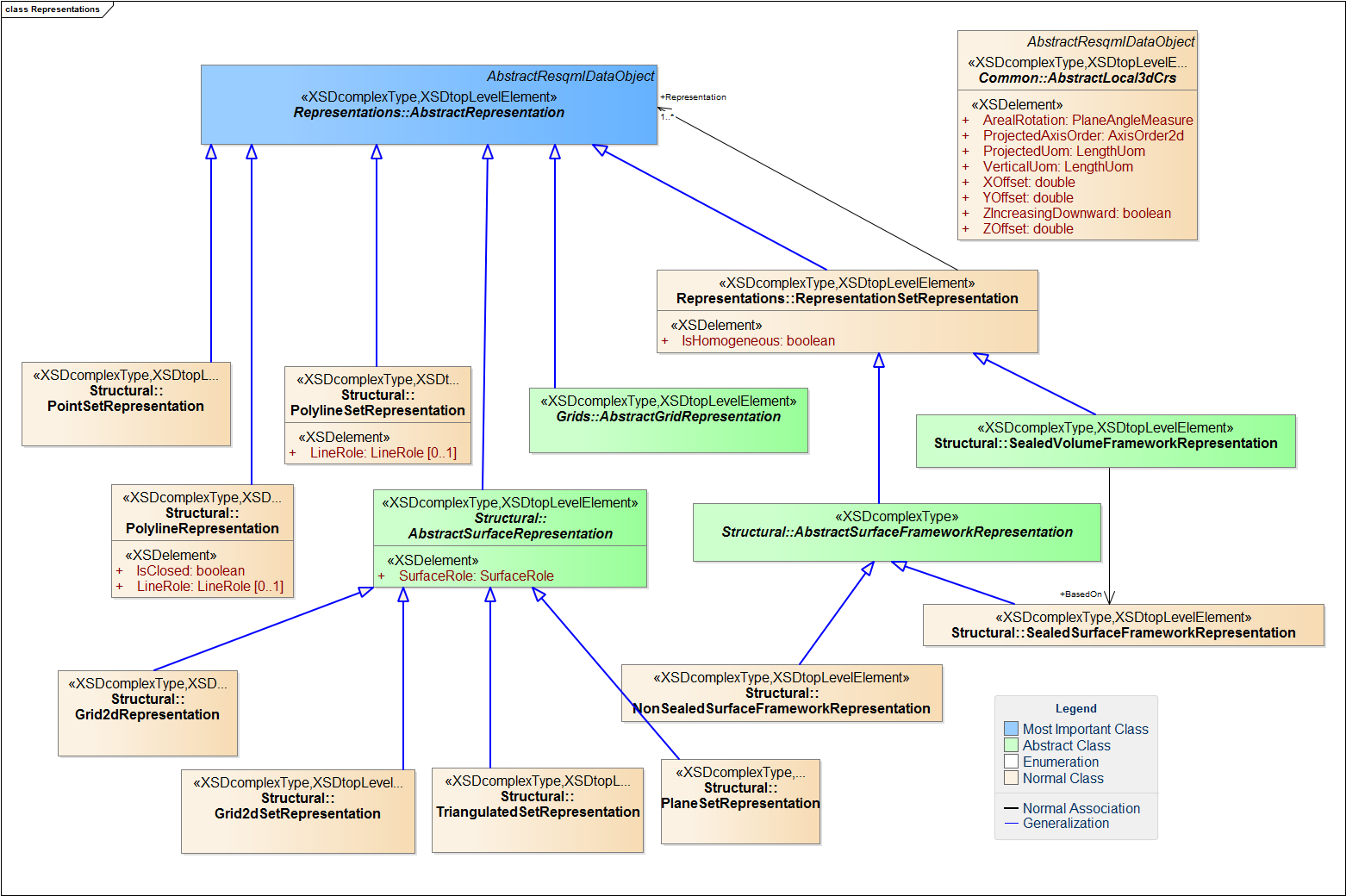10.1 Introduction
| Topic Version | 1 | Published | 09/11/2015 | |
| For Standard | RESQML v2.0.1 | |||
An abstract representation is the parent class of all specialized digital descriptions of a feature interpretation or a technical feature (Figure 10.1-1).
Every representation may be based on a topology and may contain the geometry of its own digital description or may be based on the topology or the geometry of another representation. RESQML has two main categories of representations:
- Individual representations. Each Individual representation is specialized by dimension (point, polyline, surface, volume) and represents only one individual geological interpretation (such as, horizons, faults, geological bodies, geological units, and fluid phase units).
- Organization representations, which are “sets” of individual representations and frameworks. The individual representations can be collected into a bag or can be associated topologically in frameworks, which are consistent assemblages of different representations to represent interpretations of organizations (such as earth models, structural organizations, stratigraphic organizations, stratigraphic columns, and fluid organizations).
Any of the derived classes of abstract representation, including the grids representations, can be used to describe structural and stratigraphic feature interpretations. Grid representations are discussed in Chapter 11 Grids .
Because this class inherits from the abstract RESQML data object, all the derived top-level element classes must have an UUID and a citation object attached.
